The Tradeshow Survival Kit
When planning to exhibit at tradeshows, it’s impossible to forget the big items, such as your display, accessories, banner stands, banners, signs, and your booth staff. Unfortunately there are many other small items that need to be brought along with you that often fall between the proverbial cracks when packing for a tradeshow. Often, these small items can cost a ridiculous amount of money when you have to resort to buying them on-site or extremely inconvenient when you have to go off-site in search of them.
So to make it easier, we’ve compiled a list of items that you shouldn’t leave the office without when en route to a tradeshow. Most are small enough to either be brought in luggage by a staff member or shipped in one box to the event or to your hotel.
Tradeshow survival kit items include:
An extension cord. Will come in handy when you realize how far equipment or lighting is from the nearest outlet.
Scotch, Gaffers and masking tape. Can be used from everything from holding down a tablecloth to sealing boxes for shipment.
Stapler. What good is a stapler without staples? Pack extra!
Paper clips. What can a paperclip not do?
Velcro dots or strips. Use to adhere signage to you’re the walls of your display, hold up banners or keep tablecloths in place.
Sewing kit. Prevent wardrobe disasters with this handy kit.
Safety pins. MacGyver once saved the world with a safety pin and a rubber band. Enough said.
Push pins. Use to hold signage in place, posts messages or notes, or awaken sleepy staff.
Black permanent markers. Use for labeling boxes or marking items that you don’t want walking away.
Blue, red, and black pens. Yes, attendees steal pens so pack plenty.
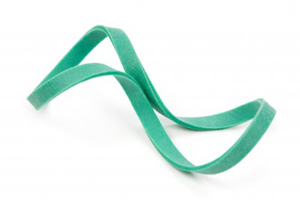 Notebooks or pads of paper. Keep notes, reminders for staff, etc.
Notebooks or pads of paper. Keep notes, reminders for staff, etc.
Rubber bands. See safety pins.
Small hammer and screwdriver. You don’t want to have to rely on on-site employees to loan you these handy essentials.
Spare pair of eyeglasses. Would be a really inconvenient time to not be able to see.
Wrist watch. Very important to keep scheduled meetings with the press or customers running on time.
Aspirin, Ibuprofen or other medications. Headaches are common at tradeshows due to late nights, over-imbibing, and lack of sleep.
Tissues. You never know when you’ll need these.
Paper towels. Prevent food or drink spills from ruining equipment.
Garbage bags. Especially handy when cleaning up after show is over.
Hand sanitizer or wipes. Shaking hands is a great way to make a good first impression, but it can also be a great way to catch a cold or other illness.
Alka-Seltzer. Plop, plop, fizz fizz…relief.
Throat lozenges. Everyone’s voices will be tired and sore from all the talking and dry air at tradeshows.
Lip balm. Indoor dry air and lots of talking equals chapped lips.
Eye drops. Won’t make up for lost sleep, but will help.
Comfortable flat shoes. Sure heels make you look great, but after hours of standing up, you’ll be happy you packed a more comfortable alternative.
Stain removal wipes. That meatball sub seemed like a good idea.
Granola bars. Perfect for a quick nourishment break.
Mouthwash or breath mints. Everyone has been trapped into talking to someone who has “death breath.” Don’t be that someone.
Extra batteries for equipment. This is one of the many items you’ll pay an arm and a leg for at the conference center’s gift shop.
Small digital camera. Take pictures of your booth, empty before the show to best show signage, displays, etc., and again while it’s filled with eager attendees for future promotional uses.
What’s on your must-have list? Share in the comments section.
Determine Trade Show Value with the 2 Minute Challenge
As tradeshow exhibit professionals, we are constantly faced with justifying the value of participating in shows. The cost of exhibiting, the travel, diminishing show attendance, and the economy have turned up the heat.
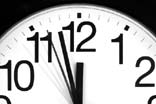 One basic test that helps me answer these challenges is to pose a simple question to any bottom line accountable executive. The question: if you were given 2 minutes to explain the advantages of dealing with your company to a person who regularly buys the same products and services from a competitor, do you think that you could convince them to give your company a try?
One basic test that helps me answer these challenges is to pose a simple question to any bottom line accountable executive. The question: if you were given 2 minutes to explain the advantages of dealing with your company to a person who regularly buys the same products and services from a competitor, do you think that you could convince them to give your company a try?
If the answer to this question is no, perhaps they should consider working for the competitor or at least reexamining your product or service offering.
Most confident executives would gladly accept this challenge. The best place to set the stage for this scenario is at a tradeshow or convention. Couple this amazing opportunity with the fact that the buyer has paid their own way to the show and that they are receptive to this pitch in the show environment and you can easily see the value proposition that tradeshows create.
The clients that I have worked with over the years that have the most success at shows have enlisted the help of a tradeshow pro to put together an integrated tradeshow marketing plan that will result in producing the maximum number of these opportunities. Our exhibit management program focuses on producing successful shows with minimum stress and maximum value. Our on-site trade show specialists are there the entire time, from set-up to tear-down – Let’s Talk.
Improve Your Trade Show ROI with Hospitality Suites
Ever considered a Hospitality Suite to improve your trade show results?
Many successful exhibitors use hospitality suites to provide additional sales opportunities at shows. This is normally a meeting room or suite in the headquarters hotel or a hotel attached to or near the convention center. The room is set up with comfortable furniture, televisions and is catered providing snacks and beverages of all types. There are often displays set up that provide promotional opportunities for the exhibitor’s new products or services.
 The room provides a place to meet before, during or after show hours with important clients or prospects and encourages longer meetings and conversations. An invitation to a hospitality suite is a good way to keep from spending precious prospecting time in the booth talking to customers. The suite can also provide a good place for the entire booth staff team to get together and discuss strategies. This private room is a much better place to conduct important meetings than the booth, a restaurant or bar.
The room provides a place to meet before, during or after show hours with important clients or prospects and encourages longer meetings and conversations. An invitation to a hospitality suite is a good way to keep from spending precious prospecting time in the booth talking to customers. The suite can also provide a good place for the entire booth staff team to get together and discuss strategies. This private room is a much better place to conduct important meetings than the booth, a restaurant or bar.
Customers and prospects feel like they are being treated as VIP’s when they are invited to the suite.
The challenge is to get attendees to take a portion of their limited time at the show and spend it in your suite. The suite usually works very well for customers but prospects are less likely to take you up on your invitation.
Suites can be rather expensive but if used properly can be an effective tool in getting the maximum results from each show.
Our on-site tradeshow specialists can maximize your trade show results.
Who Makes the Best Trade Show Booth Staff?
What to Consider When Determining the Best Staff for your Trade Show Booth
It may not always be the best idea to have your top salespeople staff your tradeshow display. There are several reasons to consider others to staff your booth.
- Most salespeople are born and bred to “close sales” and very few sales can actually be closed at a trade show.
- Salespeople will most likely have a number of current customers at the show. Tradeshow marketing objectives are, for the most part, based on gathering leads. It may be better to allow your sales staff the freedom to spend time with their customers and use others to staff your booth.
- Salespeople are typically very hard to manage. A well trained, disciplined approach to booth staffing may produce better results.
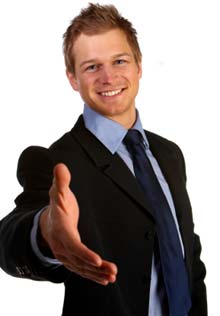 So if not salespeople, then who does make the best booth staff? There is no one correct answer to this question. I believe that each company needs to look at the goals and objectives that they have established for each show and staff accordingly. Each tradeshow exhibit, large or small, should have a preplanned basic procedure for handling visitors that is designed to properly communicate your chosen message, answer any questions and record lead information for follow-up.
So if not salespeople, then who does make the best booth staff? There is no one correct answer to this question. I believe that each company needs to look at the goals and objectives that they have established for each show and staff accordingly. Each tradeshow exhibit, large or small, should have a preplanned basic procedure for handling visitors that is designed to properly communicate your chosen message, answer any questions and record lead information for follow-up.
There should be people assigned to greeting and qualifying visitors to the booth. This role should be filled by a person who is approachable, pleasant, smiling, energetic and a good communicator. Choose people to fill this role very carefully, as they will make that first and lasting impression on your prospects. Once a prospect has been qualified, this person should also be capable of delivering a brief presentation on your company.
As conversation with the prospect continues into more depth, there must also be someone in the booth that is very product or service knowledgeable. This could be a technical person, manager, or inside sales representative. Ideally, with the help of your staff, the prospect gets the information they need and leaves your booth with a positive impression of your company.
Think about your goals for the show and make sure to select and send the staff that gives you the best shot at not only meeting your goals, but exceeding them.
Trade Show Success Strategy: Pre-Show Promotion
About 75% of show attendees plan booth visits before the show starts. Surprisingly, research studies have also found that most exhibitors do not do any pre-show promotion. If you want to have a really successful show, you need to be part of their pre-show plans.
 Pre-show promotion is inexpensive and often can just be an investment of staff time. Here is an example of how one trade show pro promoted his business before the show.
Pre-show promotion is inexpensive and often can just be an investment of staff time. Here is an example of how one trade show pro promoted his business before the show.
The VP of Sales for a furniture manufacturer stays ahead of his competition by having his sales team call every customer and key prospect before their most important annual show. They do not use the Trade Show attendee list; they call their entire target customer list. The sales team uses the upcoming show as a reason to call all of their target customers. The call is an invitation to a company-sponsored breakfast reception which has become an annual event at the show. When they learn that someone plans to attend the show, they take the opportunity to make sure they have the target customer’s current cell phone number so they can reach them during the show. They follow-up with two personalized e-mails to people who have said they will attend. Target customers, who are not attending the show, also receive two e-mails plus are sent a “breakfast in a box” gift along with information about the season’s new line of furniture and show specials.
The company uses a similar strategy for every trade show they attend: A phone call and follow-up emails to attendees and target prospects who are not able to attend the show.
It’s a simple plan. It’s easily executed by the sales team. They are careful not inundate their prospects and customers with lots of unwanted emails and promotional materials.
This well-orchestrated pre-show promotion has significantly increased the number of qualified leads generated from the show and has resulted in improving the ROI on the company’s tradeshow budget.
How can you put together a pre-show promotion that is successful?
- If you do not have a target customer list to contact, make sure to get the list of show attendees as soon as you can from the show staff. If you can get additional information about attendees that will be useful in quickly identifying prospects, make sure that it is included.
- Structure your pre-promotion campaign to start to build a relationship with your target customers before the show.
- Make sure that all materials and communication are professional and consistent with your company’s brand image. Design everything so that it is consistent with the graphic experience that your company will present at the show.
- Explore options for cost-effective pre-show communications in planned trade show mailings or emails.
- For major shows that have high traffic websites, think about online banner advertising. But be cautious about investing much of your budget in banner ads.
- Include a call to action that involves a commitment to meet during the show or to visit your booth at a set time.
Pre-show promotion takes some time and effort. It will increase your workload. But it will increase the number of qualified leads and sales that you get from the show. It gives you the opportunity to pre-sell your business. And it helps you focus your time and effort of the most important prospect versus anyone who wanders by your booth.
Do you have a pre-show promotion program? Have you found pre-show promotion is worth your investment?
Ways to Slash Trade Show Costs
Trade shows are excellent forums to showcase new products and reach customers and prospects with your marketing message, but they are expensive. Cutting trade shows out of your marketing budget entirely, however, is pound-wise and penny foolish. 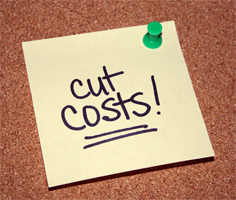 Let’s take a look at some ways you can shave costs out of your trade show budget without sacrificing the impact of your exhibit.
Let’s take a look at some ways you can shave costs out of your trade show budget without sacrificing the impact of your exhibit.
Rent instead of own. Some companies get weighed down by the expense of owning their own exhibits; not just the initial expense but the costs associated with storing, shipping, prepping, maintaining, as well material handling expenses once it has been received at the show site.
Bring your own supplies. Renting supplies at a trade show can put a serious crimp in efforts to reduce costs. Though it might seem more cost-efficient to avoid the costs of shipping things such as tables, carpet, chairs, etc., the reality is that you can save by shipping and reusing your own.
Leverage tradeshow materials for other uses. Banners or posters used at trade shows make great visual advertisements in the front window of retail stores. Brochures not given out at shows can double for customer/prospect mailings.
Get handy. One way to save big is to bring your own tools and put your booth staff to work setting up everything that’s not mandated by trade show labor rules.
Negotiate booth rent. Exhibition companies have been hit pretty hard by the recession. What’s bad news for them could be good news for exhibitors. If you’ve exhibited at the same trade show for years, try and renegotiate your booth rent with the tradeshow organizer. Agreeing to sign a multi-year contract might help hasten a deal as organizers are looking to keep you as a long-term exhibitor.
Go smaller. Booth rent accounts for approximately 20% of your total trade show costs, so reducing the size of your booth can have an immediate and big impact on your bottom line.
Ship early. If you are shipping your exhibit or supplies to a show, be sure and plan to ship well ahead of time so you can send all items in the slowest, least expensive way possible. Also, check out whether you can ship some items locally instead of from your location.
Top Ten Tips – How to Work a Tradeshow Booth
Your company has invested a great deal of money into a beautiful tradeshow exhibit and you’ve been selected to work the booth. How do you prepare yourself to make the most of this opportunity?
Here are some helpful tips:
- Create a preshow plan. Profile the type of prospect you wish to attract to better focus your efforts. Get a preregistration attendee list and contact as many of the suitable prospects as possible before the show. Extend a personal invitation to your tradeshow booth and give the attendee a reason to stop by – something new for them to see works well. You should contact any very important prospects to try to set up an appointment at the tradeshow.
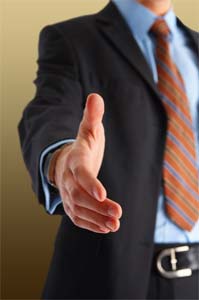 Familiarize yourself with the entire convention agenda. Be aware of keynote speakers, educational sessions, and social events. Prioritize them and make sure to attend. Be prepared to discuss these sessions with prospects who come to the booth.
Familiarize yourself with the entire convention agenda. Be aware of keynote speakers, educational sessions, and social events. Prioritize them and make sure to attend. Be prepared to discuss these sessions with prospects who come to the booth.- Study the design of your exhibit. Read and understand the graphics. Have a plan for giving the prospects a quick tour of the booth and recording lead information for follow-up.
- Develop a plan to deal with current customers efficiently so that they do not monopolize precious prospecting time.
- Memorize a few greetings. Try not to ask questions that can be answered with a simple yes or no. Your goal should be to encourage the prospect to talk about themselves or their company so that you can tailor your presentation to their interests.
- Be approachable. Refrain from eating in the tradeshow booth, checking your Blackberry, or holding extended conversations with coworkers. It is human nature not to be rude and interrupt people and it will make your tradeshow exhibit seem uninviting.
- Be sure to have a disengagement line or two. The best one is “thanks for stopping by”, but if you are talking to an important prospect it might be better to say “where do we go from here?” or “how would you like me to follow up?”
- Take notes. There are so many people and so little time. Brief notes will help you to be more effective with your follow-up.
- Try to schedule breaks throughout the day to deal with voicemail, email, and just catch your breath. Remember, quality is more important than quantity.
- Follow up in a timely manner, meaning the next day. Don’t risk letting your prospect forget you.
Are you interested in exhibit management for your entire tradeshow program? Our exhibit management is based entirely on strategic planning. Contact us today if you are in need of trade show help.
Trade Show Preparation Checklist
Things to do before leaving for a trade show
Create a trade show project timeline. Take a look at the show exhibitor manual that is available online. Many show manuals include a chronological list of deadlines that make an excellent starting point for your personalized project timeline. Things that you may add to this list include: preparation and shipment of your products and literature, making your travel arrangements, hotel accommodations for your staff, making arrangements for activities, dinners, etc. during the show.

- Make a folder or binder to contain all of the confirmations and show services forms that you have submitted.
- Create a list of important telephone numbers. These are specific to each show. This can be done electronically or manually but should be something that you have with you at all times in the trade show city.
- Check the weather in the trade show city. Make sure that you bring the right clothes for the climate and keep in mind that the convention center might not be heated or air conditioned during installation and dismantling.
- Take a good digital camera to document things. Cell phone cameras are getting better but the best results can be expected if you use a decent quality portable digital camera. You will want to photograph your display to reference for future show planning. You may need to document damage to items during shipment. You may wish to take some shots of competitors’ displays or other exhibits that you find attractive.
- Plan how you will evaluate the show and collect the necessary information.
- Make sure that your booth staffers are aware of the show hours and when they are to work the booth.
- Plan a booth staff orientation meeting in the booth before the show opens on the first day to make everything work smoothly.
- Think about dismantle. Where and how are your materials being shipped after the show? Have labels and paperwork filled out to eliminate unnecessary confusion during dismantle.
- Leave yourself sufficient time to catch your plane. Dismantle will go much better if you are not in a rush to get to the airport.
Do you need trade show help? Click here for a list of services Alexis Exhibits provides to make sure everything goes according to plan.
Good luck with the show!
Make ’em Laugh: Ten Ways to Entertain Trade Show Attendees
Use Entertainment to Increase Trade Show Booth Traffic
You’ve spent the money on your booth. Your booth staff have been well trained to deliver persuasive sales pitches. Your displays are in order; your brochures are neatly stacked. Your badge scanner is on the ready. Now, you just need to get the attendees in your booth so those employees can get to work generating the leads and sales needed to justify the expense of the tradeshow.
Sounds easy, but on a busy, chaotic tradeshow floor there’s a lot of competition for the eyes and ears of potential customers. So how do you pull attendees away from competing booths? For one, you need to deploy a creative strategy that sets your company apart from the sea of competitors and increases booth traffic.
Let’s look at ten ways your company can use entertainment to increase booth traffic:
 Magicians. It’s more than Abracadabra and Hocus-Pocus. There is something about magicians that brings out child-like awe in everyone, including your most sought-after sales prospects. Well-trained magicians can weave the wonder of magic with your company’s vital marketing messages, providing both entertainment and education.
Magicians. It’s more than Abracadabra and Hocus-Pocus. There is something about magicians that brings out child-like awe in everyone, including your most sought-after sales prospects. Well-trained magicians can weave the wonder of magic with your company’s vital marketing messages, providing both entertainment and education.- Interactive games, such as putting competitions. For many, golf is somewhat of an addiction. This is why attendees won’t be able to resist taking their chances to sink the most putts, land a coveted hole-in-one, or beat their colleagues in the lowest score of three shots competition. Add prizes with your company logo to up the ante.
- Sports simulations and virtual, computer-enhanced experiences. Immerse attendees in a custom-branded, virtual reality (VR) entertainment experience to not just lure them into your booth, but to captivate them. Choices include baseball, Indy and NASCAR car racing, golf, flight simulators, laser shooting galleries, and motion thrill rides.
- Money-blowing machines. This might sound cheesy, but in today’s dismal economy, nothing grabs people’s attention like the potential to win money. Attendees can win a chance to spend a minute in the telephone-size cube to collect as many prizes (cash or customized coupons for your company’s products or services) as they can.
- ATM Money Machines. Following along on the previous idea, this relatively new promotion draws attendees in for a chance to use the ATM machine, which dispenses real coupons, prize vouchers, gift certificates, and customized bills good towards purchases from your business.
- Live entertainment. These can include comedians, circus performers, tribute bands, and dance troupes. Great at garnering people’s attention who might want to watch or interact with an entertainer. Make sure the performers are well-versed in your company’s products or services and have the skills to disseminate information or sales messages to draw attendees into your booth to hear more.
- Customized Event Photography. Thanks to computer software, attendees can have their 15 minutes of fame by seeing photos of their faces on various unique backgrounds (Sports Illustrated cover, standing behind a presidential podium, posing with the Queen of England, etc.). Incorporating your logo somewhere on these unique, unforgettable keepsakes —one which attendees will likely not throw away—ensures the longevity of your marketing message unlike most tradeshow, throwaway gimmicks.
- Celebrity Look-Alikes. Try as they may to deny it, people are naturally drawn to celebrities, even when they aren’t the real deal. Add a photographer and nearly everyone will stop to get his or her picture taken with a “star.”
- Psychics and fortune tellers. Why not everyone is a believer in psychic powers, having a psychic or fortuneteller in your booth to do Tarot card and palm readings or handwriting analysis is a fun way to attract people to your booth. Good ones, who work the professional trade show circuits and often double as motivational speakers, are able to not just stop traffic, but deliver professional, informative and memorable messages about your company and its products.
- Caricature sketch artist. An oldie but a goodie, a cartoon sketch artist can be a very effective trade show booth secret weapon because it packs of double punch: it helps “draw” people into your booth and creates a memorable giveaway for attendees. Make sure that all caricature sketches have your logo on them somewhere to ensure longevity of your marketing message.
Win Over Your Prospect Before Giving Away Literature at a Trade Show
Should I Give Away Literature at My Trade Show?
This is probably the most common strategic question that an exhibit marketing professional faces. When asked for my opinion, my reply is “reluctantly”.
 The biggest problem with literature in the booth is not the cost, weight or other logistical problems, it is that the “do you have any literature” line coming from a prospect is the worst blow off that a booth staffer can get. Once the literature is handed to the attendee, it is very difficult to keep the conversation going. What’s more, a large portion of the literature ends up in the convention center trash cans.
The biggest problem with literature in the booth is not the cost, weight or other logistical problems, it is that the “do you have any literature” line coming from a prospect is the worst blow off that a booth staffer can get. Once the literature is handed to the attendee, it is very difficult to keep the conversation going. What’s more, a large portion of the literature ends up in the convention center trash cans.
You do need to have some literature available in the booth but you can extend a conversation and gather much more critical information from the prospect by offering to deliver or send the literature after the show. You come away with a completed lead card and have the opportunity to schedule a follow-up call or visit. Providing literature in the form of a DVD or other digital media has more perceived value and is more likely to be taken back to the office than traditional printed pieces.
Using this approach reduces costs in shipping, drayage, rental of literature racks and helps the environment by reducing the amount of brochures in convention center trash cans. We can help! Let’s Talk.
Archives
- July 2021
- June 2021
- May 2021
- April 2021
- October 2018
- September 2018
- August 2018
- July 2018
- June 2018
- May 2018
- April 2018
- March 2018
- February 2018
- January 2018
- December 2017
- November 2017
- October 2017
- September 2017
- August 2017
- July 2017
- June 2017
- May 2017
- April 2017
- March 2017
- February 2017
- January 2017
- December 2016
- November 2016
- October 2016
- September 2016
- August 2016
- July 2016
- June 2016
- May 2016
- April 2016
- March 2016
